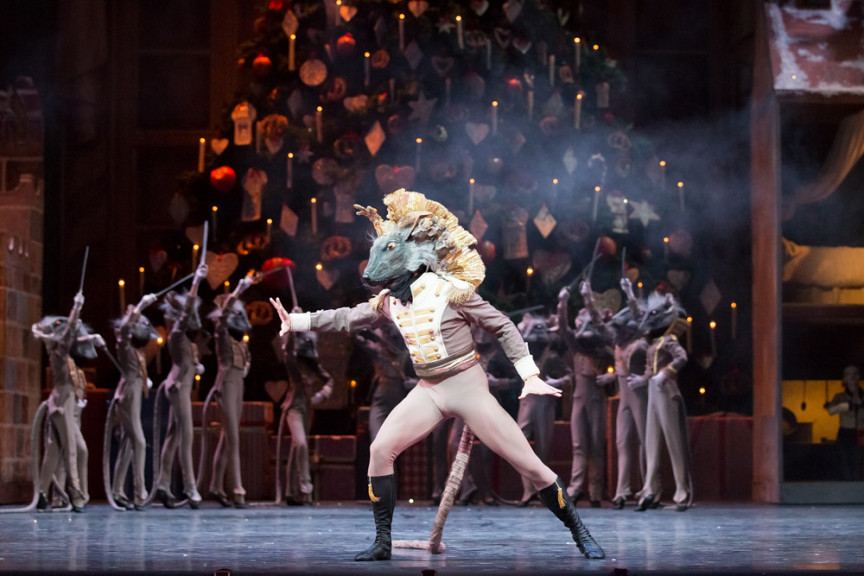Rats Bop to Mozart

The Mouse King in Tchaikovsky's The Nutcracker at the Royal Ballet in 2017 Photo Credit: Karolina Kuras
Perhaps mice dancing to Tchaikovsky is not so far-fetched after all. Researchers from the University of Tokyo recently published a study in which they found that rats could keep the beat while listening to Mozart. Accurately moving to a musical beat was thought to be a unique innate human ability, but the findings of this study suggest that this ability may be more widespread among the animal kingdom than previously thought.
The ability to recognize, respond to, and even predict the beat in a song is called beat synchronicity. Though animals may be trained to respond to music or make rhythmic sounds through musical conditioning, the rats in this study were not previously exposed to music in any way. The researchers found that the rats had the most distinct beat synchronization to music between 120 and 140 bpm (beats per minute), which is also the tempo at which humans exhibit the clearest synchronization. This is because this speed aligns with the time constant of our brains, or the time it takes for our brain to respond to a stimulus. This constant is similar across all species, unlike the time constant of the body (think of how quickly rats can scuttle across a dark alley).
The researchers were able to determine this by fitting 10 rats and 20 humans with accelerometers to measure their head movements. They then played a one-minute excerpt from Mozart’s Sonata for Two Pianos, K. 488 at 75%, 100%, 200%, and 400% the original 132-bpm tempo. Though the focus was on Mozart, the researchers also played four other songs: “Born this Way” by Lady Gaga, “Another One Bites the Dust” by Queen, “Beat It” by Michael Jackson, and “Sugar” by Maroon 5.
This study gives us insight into the animal mind as well as the biological origins of our own music and dance. The implications of this study aren’t limited to rhythm. One of the researchers, Dr. Hirokazu Takahashi, explained, “Next, I would like to reveal how other musical properties such as melody and harmony relate to the dynamics of the brain. I am also interested in how, why and what mechanisms of the brain create human cultural fields such as fine art, music, science, technology and religion. I believe that this question is the key to understand how the brain works and develop the next-generation AI.”
While we're on the topic of dancing rats, check out last year's PBS special The Nutcracker and the Mouse King, a reimagining of Tchaikovksy's classic ballet. Based on the 1816 book by E. T. A. Hoffmann, the special welcomes actor Alan Cumming, who recounts how the prince got put in a nutcracker and, unlike the ballet, what happens to Clara after she saves the prince. Conductor John Mauceri leads the Royal Scottish National Orchestra in Tchaikovsky's beloved melodies from the ballet as well as excerpts from some of his lesser-known works. Watch the special online here or on the PBS Passport app.



